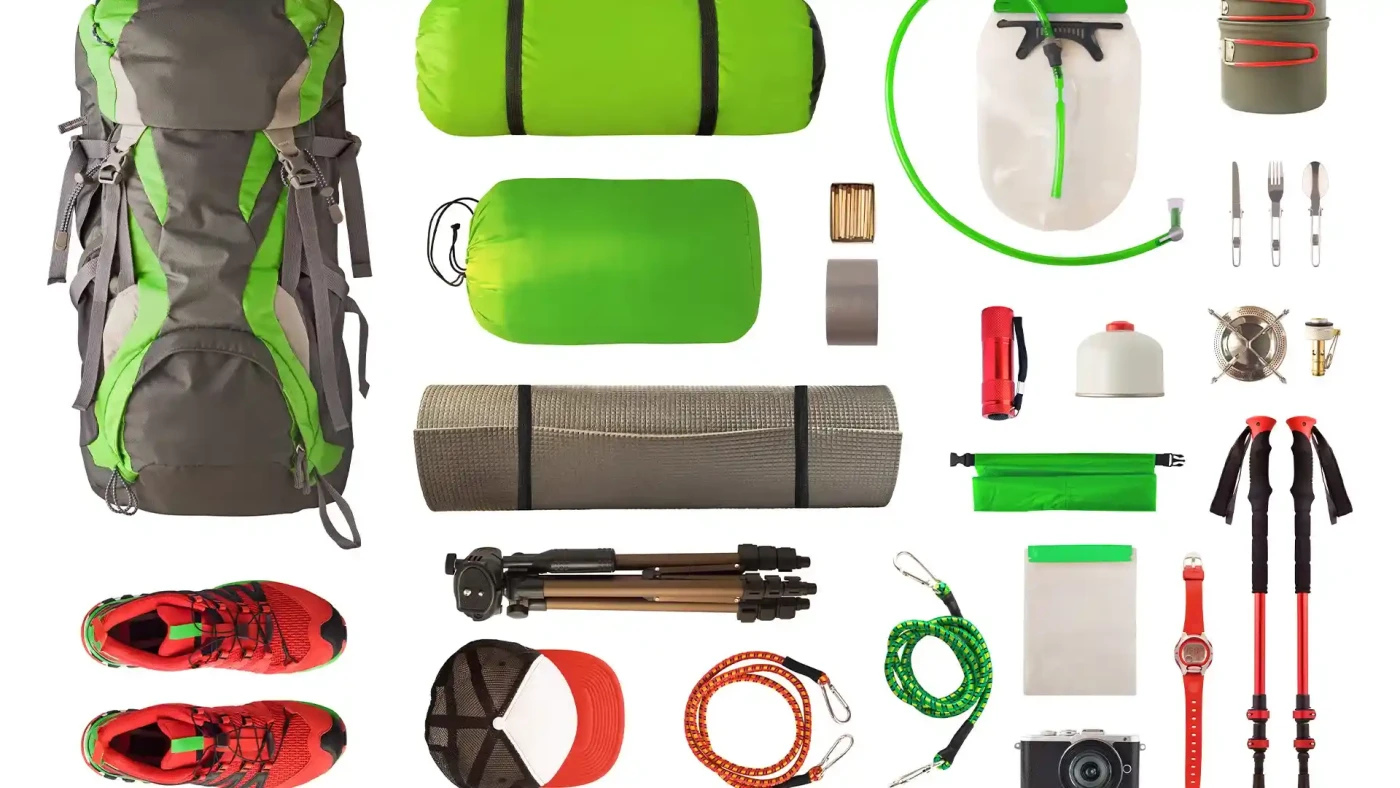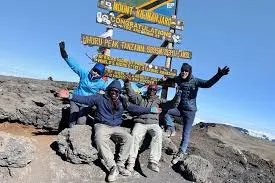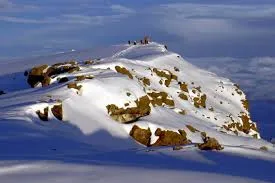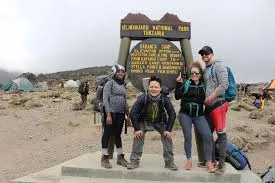Kilimanjaro Packing List: Personal Items You Must Bring
Here’s what you don’t want to leave behind on your Kilimanjaro climb: your passport and travel documents, cash/cards, personal toiletries, prescription meds, sunscreen, lip balm, a reusable water bottle, headlamp, sunglasses, a quick-dry towel, and a small first-aid kit. These personal items may seem small, but they make a huge difference in comfort and safety on the mountain. From moisture-wicking layers to sturdy boots and essential personal items, this guide covers everything you need for a 6–9 day trek. Pack light, pack right, and conquer Africa’s highest peak with confidence!
Plan Your Kilimanjaro Trek Now
Your Ultimate Kilimanjaro Packing List
When preparing for Mount Kilimanjaro, focus on packing layers that can handle a variety of conditions: moisture-wicking base layers, insulating mid-layers, and waterproof/windproof outer layers. Bring a lightweight, durable duffel bag and a daypack for essentials. Use compression sacks and roll clothes to maximize space, and prioritize key items like hiking boots, a warm sleeping bag, sun protection, and any personal necessities. Below is a comprehensive packing list for your Kilimanjaro climb, designed to cover all essentials for a 6–9 day trek with Capable Africa Tours.
Clothing: Layering for All Conditions
Kilimanjaro’s weather varies dramatically, from tropical heat (80°F) at the base to freezing summit conditions (0–20°F). A layering system is critical for comfort and safety.
| Item | Quantity | Description | Weight (Approx.) |
|---|---|---|---|
| Moisture-Wicking Base Layers | 3–4 | Merino wool or synthetic (200g weight) for sweat management | 150–200g each |
| Fleece Mid-Layers | 2 | 300–400g insulation for 40–60°F zones | 300–400g each |
| Waterproof Jacket/Pants | 1 each | Gore-Tex or similar for rain and wind | 500–700g total |
| Down Jacket | 1 | 800-fill for summit night (0–20°F) | 400–600g |
| Wool Socks | 3–4 pairs | Thick, cushioned for warmth and blister prevention | 80–100g each |
| Hiking Boots | 1 pair | Waterproof, broken-in, mid-to-high ankle support | 1–1.5kg |
| Sun Protection Accessories | 1 each | Wide-brimmed hat, UV400 sunglasses, neck gaiter | 100–200g total |
Gear and Equipment: Tools for Success
Reliable gear is essential for navigating Kilimanjaro’s rugged terrain and high altitudes. Capable Africa Tours offers rentals for select items, but owning key equipment ensures a perfect fit.
- Daypack (30–40L): Carry 5–7kg of daily essentials like water, snacks, and extra layers. Choose one with padded straps.
- Duffel Bag (70–90L): Waterproof, up to 15kg, carried by porters. Use compression sacks for organization.
- Sleeping Bag: Rated for -15°C/5°F, paired with a sleeping pad (R-value 4+).
- Trekking Poles: Adjustable, 500–700g, for stability on steep descents.
- Headlamp: 200+ lumens with spare batteries for summit night.
- Water System: 3L hydration bladder or two 1L Nalgene bottles.
Personal Items: Essentials for Comfort
Personal items keep you healthy, comfortable, and prepared for emergencies. Pack light but don’t skimp on these must-haves.
- First-Aid Kit: Include bandages, blister pads, painkillers, and altitude medication (e.g., Diamox, consult a doctor).
- Toiletries: Biodegradable soap, toothbrush, SPF 50+ sunscreen, SPF lip balm, wet wipes, and hand sanitizer.
- Documents: Passport, visa, travel insurance, vaccination card (yellow fever required).
- Electronics: 10,000mAh power bank, camera, spare batteries (charging is limited).
- Snacks: 500–1,000g of energy bars, nuts, or dried fruit for quick energy.
Packing Guidelines
To optimize your load, adhere to these weight and volume guidelines:
- Total Duffel Weight: Max 15kg (porter limit).
- Daypack Weight: 5–7kg for daily comfort.
- Clothing Layers: Limit to 2–3 outfits to save space.
- Water Capacity: 3L daily to stay hydrated at high altitudes.
Why Packing Right for Kilimanjaro Matters
Packing right for Kilimanjaro matters because every item you bring affects your comfort, safety, and success on the climb. The right gear keeps you warm, dry, and energized, while avoiding unnecessary weight makes each step easier—so smart packing isn’t just convenient, it’s essential. Here’s why packing smart makes all the difference:
- Safety First: Proper clothing and gear protect against hypothermia, sunburn, and altitude-related issues.
- Comfort on the Trail: Lightweight, well-fitted gear reduces fatigue and blisters.
- Weather Versatility: Layering systems handle Kilimanjaro’s extreme temperature swings.
- Efficiency: A streamlined pack keeps you mobile and within porter weight limits.
With Capable Africa Tours, our expert guides ensure your gear is checked before the trek, so you’re fully prepared for the journey ahead.
Visualize Your Kilimanjaro Packing Prep
Watch this video to see how to pack smart for your Kilimanjaro adventure with Capable Africa Tours. From layering tips to gear organization, we’ve got you covered.
Tips for Packing Light and Smart
Pack light by focusing on versatile layers you can mix and match, limit shoes to essentials, and choose multi-use gear. Roll clothes instead of folding to save space, use packing cubes for organization, and weigh your bag before you leave to avoid surprises. Always remember: less is more—every extra item adds weight and stress. With Capable Africa Tours, you’ll learn how to streamline your gear for a 6–9 day Kilimanjaro trek. Follow these practical tips:
- Break In Gear: Test boots and clothing on short hikes to avoid discomfort.
- Use Multi-Purpose Items: A neck gaiter serves as sun protection and warmth.
- Minimize Clothing: Stick to 2–3 outfits to stay within the 15kg limit.
- Rent Heavy Items: Rent sleeping bags or jackets from Capable Africa Tours to save space.
- Organize Efficiently: Use packing cubes or compression sacks for easy access.
- Pack High-Energy Snacks: 500–1,000g of energy bars or nuts for sustained energy.
Ready to Conquer Mount Kilimanjaro?
With Capable Africa Tours, your Kilimanjaro climb is backed by expert guides, a 98% summit success rate, and a comprehensive packing guide. Book now to secure your spot and trek with confidence!
- 98% summit success rate with expert guides
- Eco-friendly trekking with local community support
- Comprehensive gear rentals available
- Customizable routes and itineraries
- All-inclusive packages with meals and transfers
Limited spots available for Kilimanjaro treks — book today!
Plan Your Trek Now


